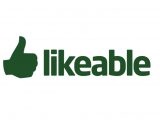Understanding the Marketplace for CRM Systems
There are over 600 system products on the market today and they all describe themselves as ‘CRM’. This can at the very least be confusing, and at worst lead to failed system investments. In our blog we hope to introduce some helpful insights.
A Bit of History
In the early years of this market (2000+) systems were being designed for customer relationship management, hence the ‘CRM’ label. The type of use and the features list initially showed a certain consistency of focus on selling products and services. Marketing campaigns and customer service became part of the accepted specification.
Relationship support systems which pre-dated 2000 were automated forms of record card database with connections to e-mails and phone notes and unlimited data fields for searching and grouping. They were designed to support users managing contact relationships. Some of today’s users just need contact management but are learning that easy-to-use systems are hard to find. Some professions or trades, (law, accounts, etc.) are offered CRM’s with a slightly different design. Some line-of-business systems like accounts or manufacturing offer CRM modules which are little more than contact management. The ensuing confusion has given rise to the new ‘XRM’ label.
Market Fragmentation Creates Confusion
It is an enormous and growing space. It is changing as new products enter, some die and some are redesigned. New groups of CRM products have started to emerge claiming designs uniquely suited to specific types of niche relationship purpose (health care, higher education, not for profit associations, etc??) requiring additional ‘non-CRM’ features. Automation, workflow and social media have become additional dimensions and AI is on the way. Compliance with GDPR has also shifted design thinking.
It is important to recognise that as the market fragments into niche areas with specialist products and other groups where products claim to do everything, the ‘CRM’ label ‘on the tin’ is no longer a guarantee of any functionality beyond a name and address database. We hope to advance views on key issues to help organisations make choices and realise the promises of relationship support applications.




